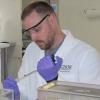This idea sprung up in a discussion about some recent research where the removal of senescent cells improve the aging biomarkers of genetically altered mice.
It seems there are many questions about senescent cells. Our members are very curious about this recent research result and would like to find out what possible methods are available for removing senescent cells, or countering the pro-aging effects of these cells.
Does anyone know of a current database of information on senescent cells? Is there a dearth of knowledge on this subject? If so, would a literature review of senescent cells be a good project for Longecity to support. Some members have already shown interest in financially supporting something like this.
I would suggest a full literature review and the creation of a detailed wiki on senescent cells, their affects on aging, and possible techniques for removal from humans.
I suggest that this be a part of Longecity's science initiative, or perhaps we could fund someone from the SENS academic initiative.
Critiques please.
Edited by Mind, 09 November 2011 - 09:52 PM.



















































